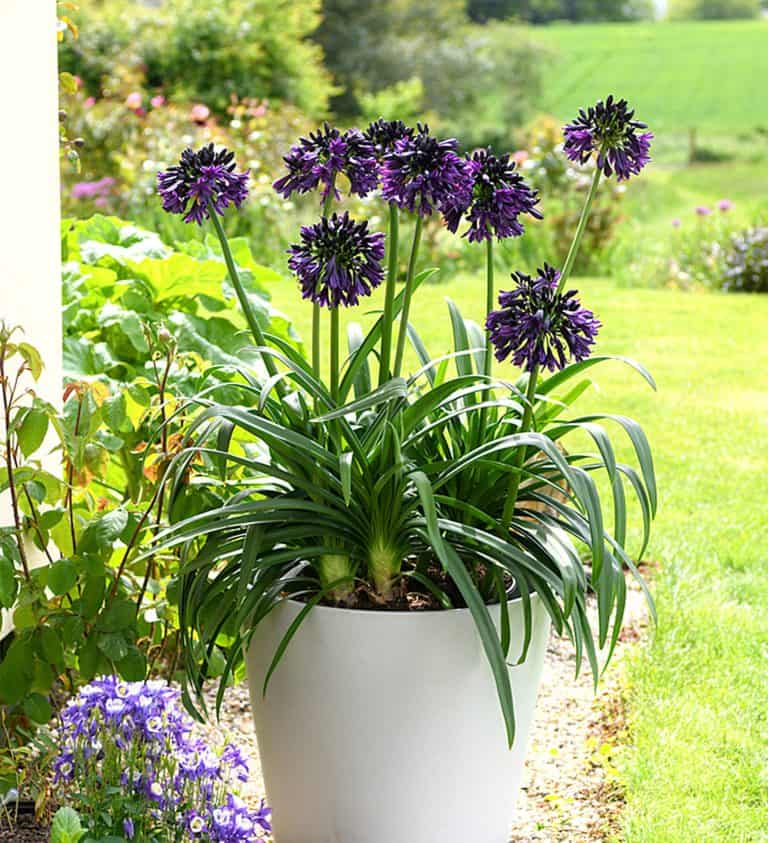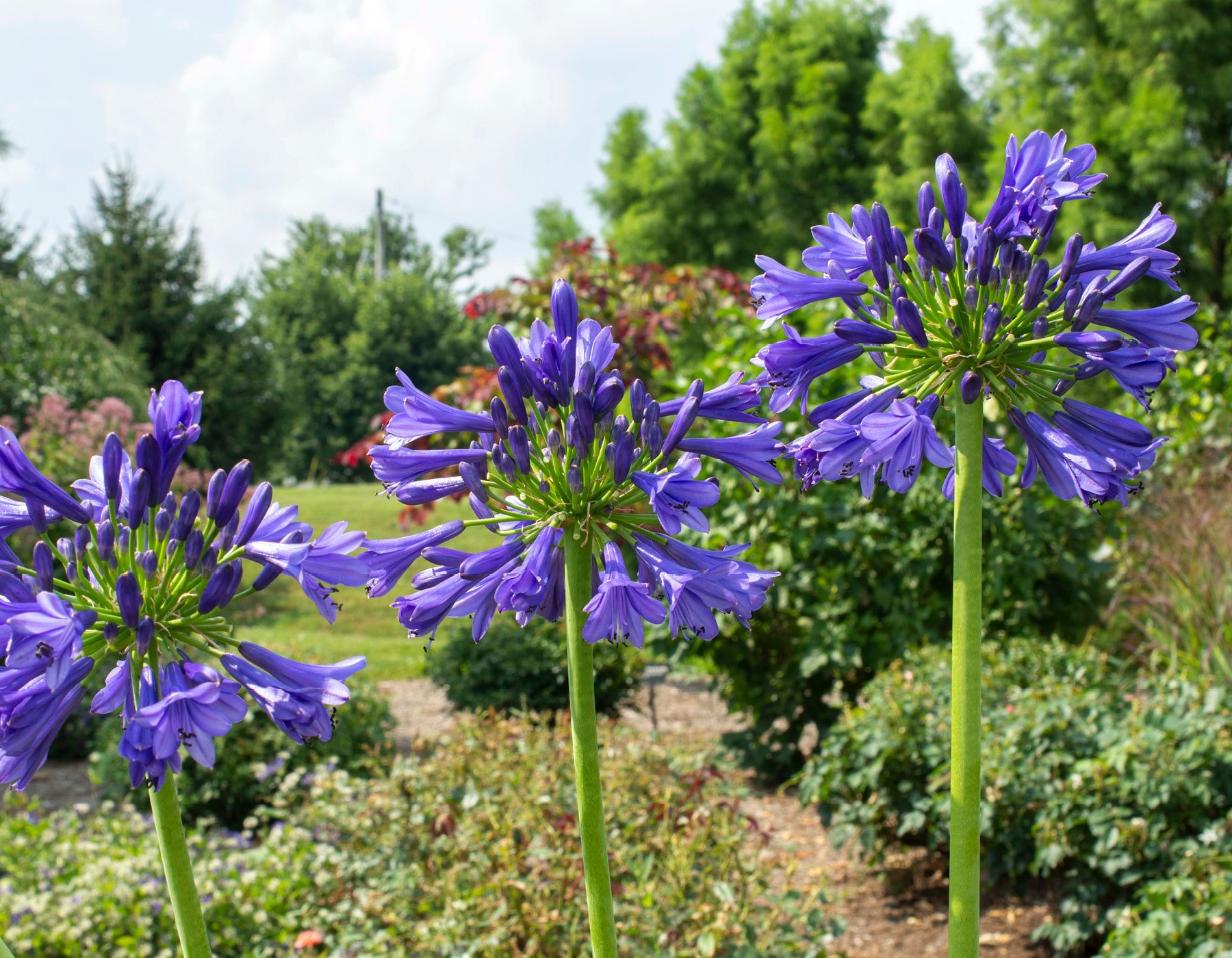Agapanthus Expanding Conditions: Dirt, Sunshine, and Watering
Agapanthus Expanding Conditions: Dirt, Sunshine, and Watering
Blog Article
Understanding the Art of Agapanthus Care: Necessary Actions for Healthy And Balanced Growth and Lively Flowers
In the world of horticulture, the farming of agapanthus stands as a fulfilling undertaking for those who look for to support these elegant blooming plants. From selecting the appropriate selection to mastering pruning strategies, the journey towards growing growing agapanthus plants is multifaceted and holds the key to opening the complete capacity of these botanical treasures.

Choosing the Right Agapanthus Variety

When selecting the right Agapanthus variety for your garden, consider aspects such as climate suitability, bloom color, and development routine. Agapanthus, typically called Lily of the Nile or African lily, is available in a selection of colors varying from tones of purple and blue to white. Select a flower color that matches your existing yard palette to create an unified landscape. In addition, consider the environment in your area to make certain the Agapanthus variety you choose can grow in your particular problems. Some varieties are more forgiving of cold temperatures, while others choose warmer environments. Understanding the development behavior of different Agapanthus ranges is crucial for appropriate positioning within your garden. Some varieties have a clumping development routine, perfect for containers or boundaries, while others have an even more spreading nature, ideal for ground cover or mass growings. By thoroughly reviewing these factors, you can pick the best Agapanthus selection to improve the charm of your yard.
Ideal Growing Problems
Thinking about the optimum ecological needs is important for successful Agapanthus farming. Agapanthus plants are sensitive to chilly temperature levels and should be safeguarded from frost throughout winter months.
To guarantee healthy development and vibrant flowers, plant Agapanthus light bulbs at a deepness of about 2-4 inches and room them 8-12 inches apart. Mulching around the base of the plants aids keep dampness and subdues weed development.
Watering and Feeding Tips
Maintaining proper wetness degrees and offering crucial nutrients are crucial elements in the care regimen for Agapanthus plants. When it comes to watering Agapanthus, it is important to strike a balance. These plants prefer constantly wet dirt but are prone to root rot if overwatered.
Feeding Agapanthus is necessary for advertising healthy growth and respected flowers. Use a balanced fertilizer, such as a 10-10-10 formula, in the early spring as new development emerges. Repeat this application every 6-8 weeks throughout the growing season. Prevent too much fertilizing, as it can bring about lush foliage at the cost of blossoms. Constantly comply with the supplier's instructions for correct dilution my response and application methods. By complying with these watering and fertilizing tips, you can guarantee your Agapanthus plants prosper and create vibrant, resilient blooms.
Pruning Techniques for Agapanthus
Pruning Agapanthus plants at the appropriate times and with correct strategies is crucial for preserving their health and promoting optimum growth and flowering. The perfect time to prune Agapanthus is in late winter months or very early springtime prior to brand-new growth emerges.
For flowered stems, wait up until the blooms have actually perished and afterwards trim them back to the base. This not just cleans the plant's appearance however also urges the development of new blossom buds. Deadheading invested blossoms can also reroute the plant's power right into producing more blossoms instead than setting seeds. However, if you wish to accumulate seeds for proliferation, leave some blossoms to completely dry and mature on the plant.
Bear in mind to use clean, sharp devices to make specific cuts and lower the danger of introducing diseases. Agapanthus. Normal pruning will certainly help keep your Agapanthus looking neat and healthy and balanced while guaranteeing an abundant display of stunning blossoms
Handling Common Bugs and Diseases
After making certain appropriate trimming methods for Agapanthus, it is essential to address common insects and conditions that can affect the wellness and vitality of these plants. One usual bug that affects Agapanthus is the Agapanthus gall midge.
Another common concern is fungal leaf place, which offers as dark sores on the leaves. To stop fungal illness, make certain this website good air circulation around the plants, stay clear of overhead watering, and eliminate any kind of contaminated fallen leaves without delay. Additionally, Agapanthus plants can suffer from origin rot navigate to these guys if they are grown in poorly draining pipes dirt. To avoid this, plant Agapanthus in well-draining soil and avoid overwatering. By being attentive and taking timely action against pests and illness, you can aid your Agapanthus plants flourish and produce dynamic flowers.

Final Thought
In verdict, mastering the art of agapanthus care involves choosing the best selection, supplying perfect growing conditions, proper watering and feeding, ideal pruning techniques, and resolving common insects and conditions. By following these necessary actions, you can make sure healthy growth and lively flowers for your agapanthus plants. Remember to regularly monitor and preserve your plants to promote their overall wellness and longevity.
To make certain healthy growth and vibrant flowers, plant Agapanthus light bulbs at a depth of about 2-4 inches and area them 8-12 inches apart. By complying with these watering and fertilizing pointers, you can guarantee your Agapanthus plants grow and generate lively, long-lasting blossoms.
One common insect that affects Agapanthus is the Agapanthus gall midget. Furthermore, Agapanthus plants can endure from origin rot if they are planted in poorly draining pipes dirt. By adhering to these vital steps, you can make certain healthy growth and lively blooms for your agapanthus plants.
Report this page